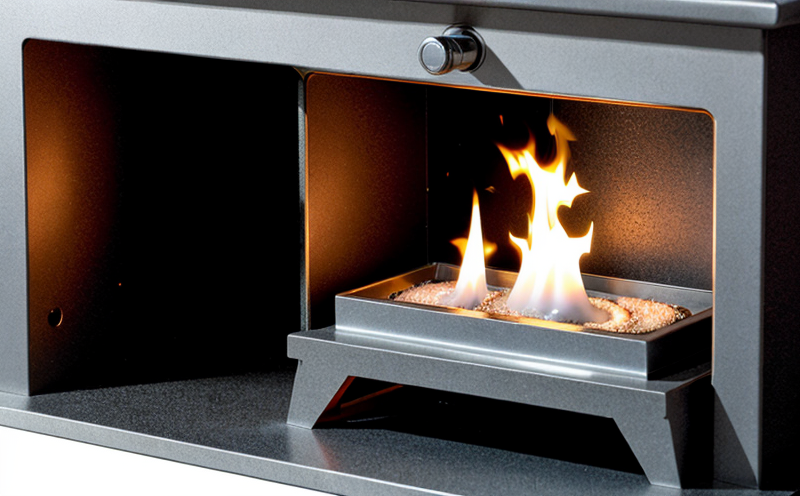Surface Flame Spread Testing of Laminates
In fire safety testing, surface flame spread is a critical parameter that quantifies how quickly flames travel across the surface of materials and how they behave under specific ignition conditions. This test is particularly important for laminates used in various sectors such as building products, furnishings, and transportation. The objective of this service is to assess the flammability characteristics of laminate materials by simulating real-world fire scenarios.
The testing process involves placing a standardized specimen on a flat surface, igniting it from one end, and measuring how far flames spread along its length within a specified time frame. This helps in determining the flame spread index (FSI) which is expressed as a class rating (e.g., Class A, B, C). The FSI provides valuable information about the material's resistance to fire propagation.
The testing apparatus used for this purpose typically includes a specialized chamber where temperature and oxygen levels are controlled. This ensures consistent and repeatable results that meet international standards such as ISO 6947 or ASTM E84. The process is rigorous, requiring precise specimen preparation which involves cutting the laminate into specific dimensions according to the standard specifications.
Once prepared, specimens undergo testing in a carefully controlled environment where flame application and measurement are automated for accuracy. Post-test analysis includes detailed documentation of results including video recordings and numerical data that provide insights into both short-term and long-term fire behavior. These reports serve as key references for manufacturers, ensuring compliance with safety regulations and enhancing product performance.
The significance of surface flame spread testing cannot be overstated given its role in preventing fires and reducing the risk of injury or property damage. By providing reliable data on how materials perform under fire conditions, this service supports informed decision-making across multiple industries including construction, furniture manufacturing, and transportation. Understanding these parameters allows for better selection of appropriate materials that meet stringent safety requirements.
| Sector | Application |
|---|---|
| Construction | Materials used in wall, floor, and ceiling assemblies. |
| Furnishings | Coverings for furniture upholstery and fabric. |
| Transportation | Interior trim materials in vehicles. |
Benefits
- Enhanced Product Safety: Ensures compliance with fire safety regulations and standards.
- Informed Decision-Making: Provides data for selecting materials that meet specific performance criteria.
- Risk Reduction: Identifies potential hazards early in the product development cycle.
- Regulatory Compliance: Facilitates meeting national and international fire safety requirements.
Industry Applications
The results from surface flame spread testing are widely applicable across several industries, each benefiting significantly from the insights gained:
- Construction: Selecting appropriate insulation and covering materials reduces fire risk in buildings.
- Furnishings: Choosing fabrics that pass flame spread testing enhances consumer safety.
- Transportation: Ensuring interior materials comply with fire safety standards protects passengers.
Use Cases and Application Examples
This service finds application in various scenarios where accurate measurement of flame spread is essential. For instance, when developing new composite materials for automotive interiors, manufacturers can use this testing to ensure that the chosen laminates do not contribute excessively to fire growth. Similarly, architects may rely on these tests during design phases to select suitable wall coverings or floor finishes.
Another example includes monitoring changes in existing products over time through periodic retesting to confirm continued compliance with current safety standards. Additionally, this service aids in comparing different materials from suppliers to identify the most suitable option for specific projects based on their fire performance characteristics.





